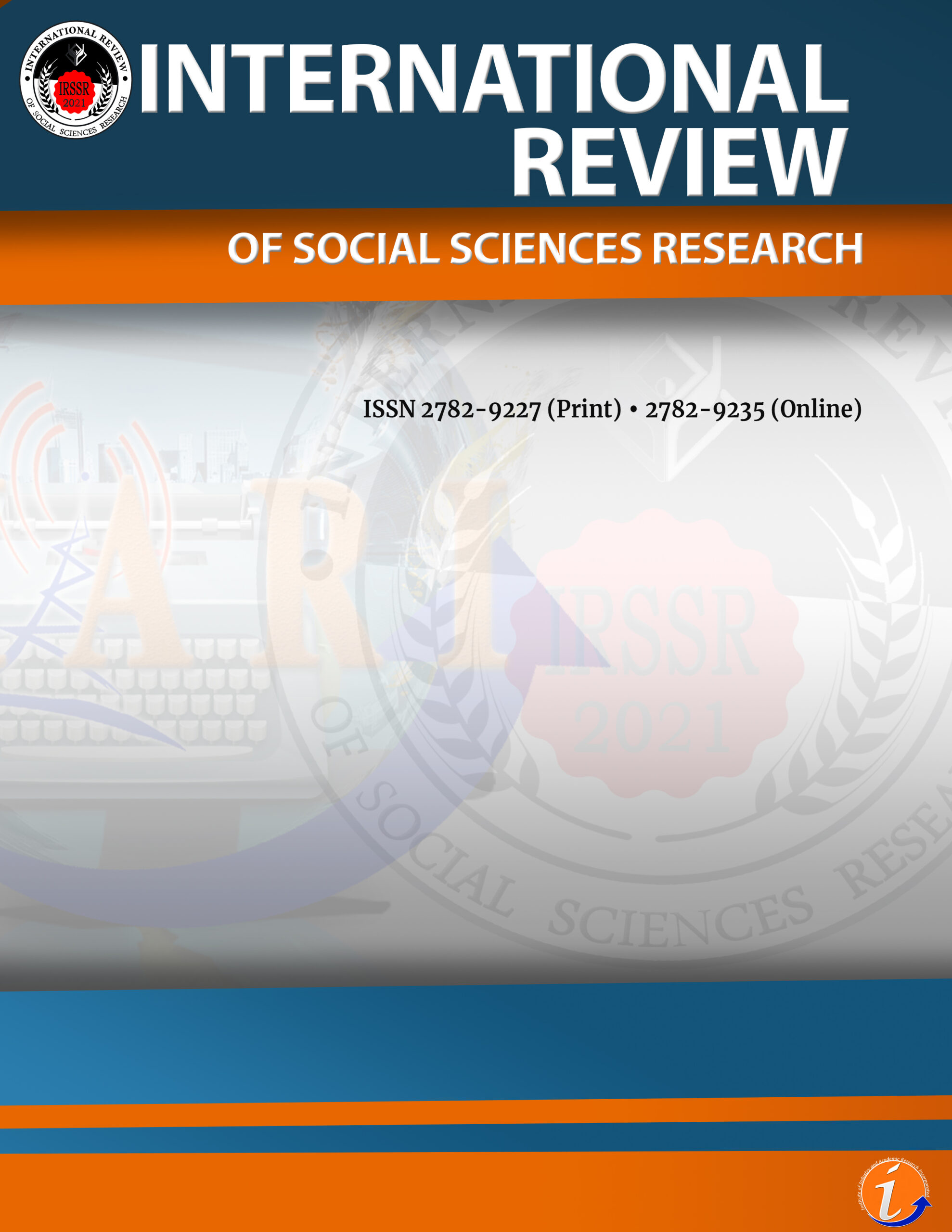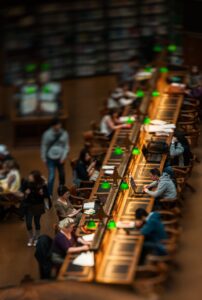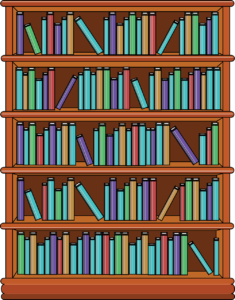Cultural troupes (CT) are community-based performing groups that deploy traditional resources and heritages in their performances to communicate community issues to the people. Communication is a fundamental aspect of cultural troupes’ performance (CTP) across various cultures and CTs in Benin City, Nigeria adopt similar communication approaches to educate their audiences and propagate the culture of the people. The study aims to stimulate broader academic interest in CTP towards addressing language and cultural degradation in the community. It uses the artistic communication (AC) framework to analyse the communication elements and conveyed messages in cultural troupes’ performances (CTP) in Benin City. A qualitative methodology is employed, incorporating data collection through focus groups (FGs), key informant interviews (URs), purposive sampling of respondents (Rs), and observation. Data analysis follows an interpretive thematic approach. Findings reveal that communication elements in CTP in Benin City align with established communication patterns in other cultural communities, and there is a constant transformation of traditional forms and intercultural penetration, alongside a low level of language and cultural knowledge among the young generations in Benin City. Additionally, the scarcity of research on communication within CTP in other communities limits the data available for this study.
communication, context, cultural troupes, performance
Daniel Eromosere Omoruan. Corresponding author. Department of Visual and Performing Arts, Durban University of Technology, Durban, South Africa. Email: 22176420@dut4life.ac.za
Sam Erevbenagie Usadolo. Department of Media, Language and Communication, Faculty of Arts and Design, Durban University of Technology, Durban, South Africa. Email: samu@dut.ac.za
"All authors equally contributed to the conception, design, preparation, data gathering and analysis, and writing of the manuscript. All authors read and approved the final manuscript."
No potential conflict of interest was reported by the author(s).
This work was not supported by any funding but the APC was paid by the Durban University of Technology, Durban, South Africa.
This study was conducted in accordance with the ethical guidelines set by Durban University of Technology. The conduct of this study has been approved by the Institutional Research and Examination Committee (IREC) with reference number IREC 175/23.
AI tools were not used in writing this paper.
Abbe, J.E. (2017). Dance and change management in modern Benin cultural troupes’ performance. Nigerian Theatre Journal: A Journal of the Society of Nigerian Theatre Artists, 17(1), 165-178).
Abbe, J. E. (2022). Ugho dance performance of the Benin people: An endearing but endangered form. Umẹwaẹn: Journal of Benin and Edo Studies, 7, 1-23.
Achebe, C. (1958). Things fall apart. Heinemann
Adeyemi, S. (2017). Many colours of an African performative ritual. Alarinjo: Oye Journal of Theatre and Media Arts, 1(2), 16-30.
Akinsipe, F. (2007). Obitun dance of the Ondo people: From rite to dance. In: C. Ugolo (ed.) Perspetives in Nigerian dance studies (pp. 50-75). Caltop Publications.
Akinwande, B. I. (2024). Rhetorical figures in Òndó Praise Chants. Yoruba Studies Review, 9(1&2), 79-106. https://doi.org/10.32473/ysr.9.1and2.137825
AL-Mutalabi, M. M. (2019). Exploring the significance of proverbs in English language. Alsuna: Journal of Arabic and English Language, 2(1), 30-38. https://doi.org/10.31538/alsuna.v2i1.298
Álvarez, I., Perez, H. J., & Perez-Carreno, F. (2010). Expression in the performing arts. Cambridge Scholars Publishing.
Anigala, A.E. (2006). Traditional African festival drama in performance. Kraft Books.
Asika, I. E., & Emeodi, L. I. (2012). The Palm-oil with which good stories are told: Proverb as plot generator in Flora Nwapa”s Efuru and Idu. AFRREV LALIGENS: An International Journal of Language, Literature and Gender Studies, 1(2), 111-126. https://dx.doi.org/10.2139/ssrn.4065936
Bakare, O. (2006). The contemporary choreography in Nigeria: A realistic culture preserver or a harmful distortionist? In A. Yerima, B. Rasaki, & A. Udoka (Eds.), Critical Perspectives on Dance in Nigeria (pp. 64-75). Ibadan: Kraft Books Limited.
Banda, F., & Mwanza, D.S. (2017). Language-in-education policy and linguistic diversity in Zambia: An alternative explanation to low reading levels among primary school pupils. In: M.K. Banja (ed.). Selected readings in education (109-132). Lusaka: University of Zambia Press.
Bannerman, H. (2014). Is dance a language? Movement, meaning and communication. Dance Research, 32(1), 65-80. https://www.jstor.org/stable/43281347.
Bashir, A.A., & Idris-Amali, H.O. (2012). Positive portrayal of women in Idoma proverbs. Foreword to the Offering on the Gazelle, 485.
Bellini, P.P. (2017). Intercultural potential of artistic communication. International Conference RCIC’17.
Bengtson, V.L., Putney, N.M. & Harris, S. (2013). Families and faith: How religion is passed down across generations. Oxford Academic. https://doi.org/10.1093/acprof:oso/9780199948659.001.0001
Billé, F. (2012). The spectacular state: culture and national identity in Uzbekistan. Central Asian Survey, 31(2), 229–230. https://doi.org/10.1080/02634937.2012.688503
Bokor, M. J. (2014). When the drum speaks: The rhetoric of motion, emotion, and action in African societies. Rhetorica, 32(2), 165-194. https://doi.org/10.1525/RH.2014.32.2.165
Braun, V., & Clarke, C. (2022). Thematic analysis. Sage Publications. https://doi.org/10.1080/13642537.2024.2391666
Chandra, Y., & Shang, L. (2019). Inductive Coding. In: Qualitative Research Using R: A Systematic Approach. Springer, Singapore. https://doi.org/10.1007/978-981-13-3170-1_8
Dementjeva, J. (2024). Educational management aspects of the somatic intelligence. Journal of Management, 40(2), 75-86. https://doi.org.10.38104/vadyba.2024.2.07
Dilshad, R.M. & Latif, M.I., (2013). Focus group interview as a tool for qualitative research: An analysis. Pakistan Journal of Social Sciences (PJSS), 33(1).
Edebiri, D. U. (2005). Benin historical essays. Allen Publishers.
Ehondor, B. (2017). The concept of proverbs as a theoretical category in communication in Africa. Pan-Atlantic University. https://www.researchgate.net/publication/321698840
Emielu, A. (2013). Nigerian highlife music. Journal of International Library of African Music, 158-161. https://journal.ru.ac.za/index.php/africanmusic/article/view/1895/971
Ero, O.O. & Owie, S.P. (2016). The Benin and Ogiamien connection. Mindex
Espinosa-Dulanto, M., & Olivares-Palma, M. A. (2020). Contemporary tendencies of folkloric dance in Latin America. Journal of Dance Education, 20(3), 114-121.
Etikan, I., Musa, S.A. & Alkassim, R.S., (2016). Comparison of convenience sampling and purposive sampling. American Journal of Theoretical and Applied Statistics, 5(1), 1-4. https://doi.org/10.11648/j.ajtas.20160501.11
Faigin, D. A., & Stein, C. H. (2010). The power of theater to promote individual recovery and social change. Psychiatric Services, 61(3), 306-308. https://doi.org/10.1176/ps.2010.61.3.306.
Feshchenko, V. (2023). Artistic communication as an object of semiotics and linguistic aesthetics. Sign Systems Studies, 51(3-4), 565-603. https://doi.org/10.12697/SSS.2023.51.3-4.04.
Franklin, E.N. (2014). Dance imagery for technique and performance. Human Kinetics. https://doi.org/10.5040/9781718212831
Folabalogun, M. (2017). Art, symbol and royalty: A case study of the Yoruba speakers in Nigeria. AFRREV IJAH: An International Journal of Arts and Humanities, 6(1), 162-175. https://doi.org/10.4314/ijah.v6i1.14
Garfias, R. (2004). Music: The cultural context. Osaka: National Museum of Ethnology, 47, 1-38.
Ghosh, R.K. (1987). Artistic communication and symbol: Some philosophical reflections. The British Journal of Aesthetics, 27(4), 319-325. https://doi.org/10.1093/bjaesthetics/27.4.319
Gordeeva T.V. (2019). Artistic communication in dance performance: The transformation of spectators’ comprehension in the works of Andrey Andrianov and Taras Burnashev. Philharmonica International Music Journal, 2, 55-62. https://doi.org/10.7256/2453-613X.2019.2.40288
Hanna, J. L. (1979). To dance is human: A theory of nonverbal communication. University of Chicago Press. https://doi.org/10.2307/851611
Hess, J. (2021). Music education and the colonial project. In: The Routledge Handbook to Sociology of Music Education (23-39). Routledge.
Hoffman, B.M., Bayak, M.M., Craighead, W.E., Sherwood, A., Doraiswami, P.M., Coons, M.J., & Blumenthal, J.A. (2011). Exercise and pharmacotherapy in patients with major depression: One-year follow up of the smile study. Psychosomatic Medicine, 73,(2), 127-133. https://doi.org/10.1097/PSY.0b013e31820433a5
Hox, J.J. & Boeije, H.R., (2005). Data collection, primary versus secondary. In: Encyclopodia of Social Measurement (pp. 593-599). Amsterdam: Elsevier. https://doi.org/10.1016/B0-12-369398-5/00041-4
Juslin, P. N., & Laukka, P. (2003). Communication of emotions in vocal expression and music performance: Different channels, same code?. Psychological Bulletin, 129(5), 770. https://doi.org/10.1037/0033-2909.129.5.770
Kemal, S. (1986) Kant and Fine Art: An essay on Kant and the philosophy of fine art and culture. Oxford University Press. https://doi.org/10.2307/2219719
Koozin, T. (2024). Embodied expression in popular music: A theory of musical gesture and agency. Oxford University Press. https://doi.org/10.1093/oso/9780197692981.003.0001
Kringelbach, H.N. (2014). Choreographic performance, generations and the art of life in post-colonial Dakar. Africa, 84(1), 36-54. https://doi.org/10.1017/S000197201300065X
Kwakye-Opong, R., & Adinku, G. U. (2013). Costume as medium for cultural expression in stage performance. Arts and Design Studies, 8, 9-19.
Leavy, P. (2017). Research design. New York: Gilford. https://doi.org/10.1111/fcsr.12276
Lo-Bamijoko, J. N. (2007). Music and dance in Igbo culture: A marriage of convinience. In: C. Ugolo (ed) Perspetives in Nigerian dance studies (pp. 173-183). Caltop Publications.
Luhmann, N. (2000). Art as a social system. Stanford University Press.
McElroy, L. M., & Ladner, D. P. (2014). Defining the study cohort: Inclusion and exclusion criteria. Success inAacademic Surgery: Clinical trials, 131-139. https://doi.org/10.1007/978-1-4471-4679-7_11
Makkreel, R. A. (2006). The aesthetic and hermeneutic significance of expression. Graduate Faculty Philosophy Journal, 27(2), 187-204. https://doi.org/10.5840/gfpj20062729
Merriam, S. B., & Tisdell, E. J. (2016). Qualitative research: A guide to design and implementation. John Wiley & Sons. https://doi.org/10.1177/0741713616671930
Mitchell, J. & Meehan, T. (2022). How art-as-therapy supports participants with a diagnosis of schizophrenia: A phenomenological lifeworld investigation. The Arts in Psychotherapy, 80, 101917. https://doi.org/10.1016/j.aip.2022.101917
Mohajan, H.K. (2018). Qualitative research methodology in social sciences and related subjects. Journal of Economic Development, Environment and People, 7(1), 23-48. https://doi.org/10.26458/jedep.v7i1.571
Munn, Z., Porritt, K., Lockwood, C., Aromataris, E. & Pearson, A., (2014). Establishing confidence in the output of qualitative research synthesis: The ConQual approach. BMC Medical Research Methodology, 14(1), 1-7. https://doi.org/10.1186/1471-2288-14-108
Njwe, E. (2015). The palm oil with which words are eaten”: Proverbs from Cameroon”s endangered indigenous languages. Languages in Africa: Multilingualism, language policy, and education, 118-126.
Nwabuoku, E. (2007). Dance in royal context: The Esakpaide dance of the Edo. In: C.E. Ugolo (ed) Perspectives in Nigerian Dance Studies (pp. 50-73). Caltop.
Nwizu, C. A. (2017). The motif of praise in the African oral poetic tradition. Ethnosensitive Dimensions of African Oral Literature: Igbo Perspectives, 51.
Ogene, J. (2007). Nigerian dance as visual resource. In: C.E. Ugolo (Ed.). Perspective in Nigerian Dance Studies (pp. 194-209). Caltop..
Okpokunu, E., Agbontaen‐Eghafona, K. A., & Ojo, P. O. (2005). Benin dressing in contemporary Nigeria: Social change and the crisis of cultural identity. African Identities, 3(2), 155-170. https://doi.org/10.1080/14725840500235506
O’Leary, C., Sánchez, D. S., & Thompson, M. (Eds.). (2016). Global insights on theatre censorship. Routledge. https://doi.org/10.4324/9781315714417.
Oloruntoba-Oju, O. (2013). From Alarinjo to Arugba: Continuities in indigenous Nigerian drama. African Identities, 11(4), 395-406. https://doi.org/10.1080/14725843.2013.863143
Omoruan, D. & Uzzi, F. O. (2022). God’s chisel in the hands of the carver: An esoteric view of Joseph Alufa Igbinovia. SCHOLARS: Journal of Arts and humanities. 4(1). https://doi.org/10.3126/sjah.v4il.43054
Opata, C. C., & Apeh, A. A. (2012). Proverbs as knowledge bearers: Towards a reconstruction of the knowledge of traditional medicine among preliterate Igbo society of Nigeria. Asian Journal of Natural & Applied Sciences, 1(2), 59-63.
Osadolor, O.B. & Otoide, L.E. (2008). The Benin kingdom in British imperial historiography. History in Africa, 35, 401-418. https://doi.org/10.1353/hia.0.0014
Rai, N. & Thapa, B., (2015). A study on purposive sampling method in research. Kathmandu: Kathmandu School of Law, 5.
Rounds, S. (2016). Dance as communication: How humans communicate through dance and perceive dance as communication (Doctoral dissertation, University of Oregon).
Rouse, L., & Gupta, A. (2017). Performing culture: The politics of CT in postcolonial India. Cultural Dynamics, 29(3), 163-179.
Saldana, J. (2022). The coding manual for qualitative researchers. American Journal of Qualitative Research, 6(1), 232-237. https://doi.org/10.29333/ajqr/12085
Shukla, P. (2015). Costume: Performing identities through dress. Indiana University Press.
Sønning, A. (2024). Communication across artistic expressions and codes. In: Creative Concert Production and Entrepreneurship (pp. 55-104). Routledge.
Taherdoost, H. (2016). Sampling methods in research methodology: How to choose a sampling technique for research. International Journal of Academic Research in Management, 5. https://doi.org/10.2139/ssrn.3205035
Thakur, M. (2023). An analysis of the art elements utilized in a works of art. Shodhkosh: Journal of Visual and performing Arts, 4(1). https://doi.org/10.29121/shodhkosh.v4.i1.2023.338
Thompson, J. B. (2020). Mediated interaction in the digital age. Theory, Culture & Society, 37(1), 3-28. https://doi.org/10.1177/0263276418808592
Uduak, P. & Akpan, R. W., (2020). An overview of the arts as a language of communication, expression and experience: A discourse. Serbian Research Journal of Education, Humanities and Developmental Studies, 10(1).
Usoro, R. O., & Udoette, M. S. (2014). Authenticating performance with oral forms: The Case of Uko Akpan cultural troupe. LWATI: A Journal of Contemporary Research, 11(2), 60-74.
Valentinovna, G.T. (2019). Artistic communication in dance: The transformation of spectators comprehension in the works of Andrey Andrianov and Tara Burnashev. PHILHARMONICA. International Music Journal, (2), 55-62.
Wahyuni, A. (2018). The power of verbal and nonverbal communication in learning. 1st International Conference on Intellectuals’ Global Responsibility (pp. 80-83). Atlantis Press. https://doi.org/10.2991/icigr-17.2018.19
Wolfenbarger, C. D., & Sipe, L. R. (2007). Research directions: A unique visual and literary art form: Recent research on picturebooks. Language arts, 84(3), 273-280. https://doi.org/10.58680/la20075636
Xiao, W. (2024). The language of the body: The role and significance of body shaping in drama art education. Arts Educa, 38..
Yerima, A. (2006). Symbols and images in Nigerian dances. In: A. Yerima, O.R. Bakare & U. Arnold (Eds.), Critical Perspectives on Dance in Nigeria (pp. 124-134). Caltop.
Yerima, A. (2007). Symbols and images in Nigerian dances. In: A. Yerima, O.R. Bakare & U. Arnold (Eds), Critical Perspectives on Dance in Nigeria. Caltop.
Cite this article:
Omoruan, D.E. & Usadolo, S.E. (2025). Communication elements in cultural troupes’ performance in Benin City, Nigeria. International Review of Social Sciences Research, 5(2), 156-177. https://doi.org/10.53378/irssr.353201
License:
![]()
This work is licensed under a Creative Commons Attribution (CC BY 4.0) International License.










